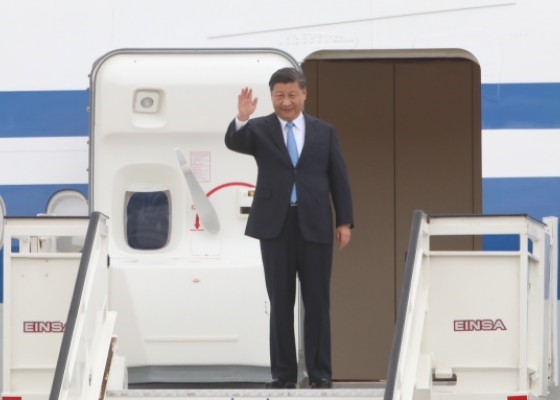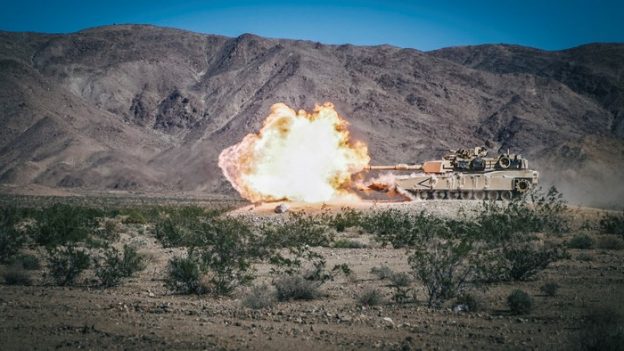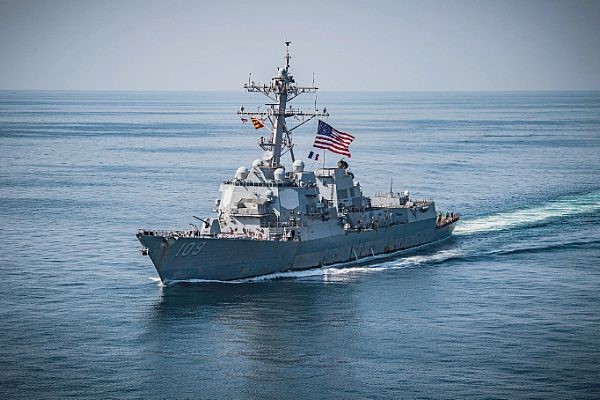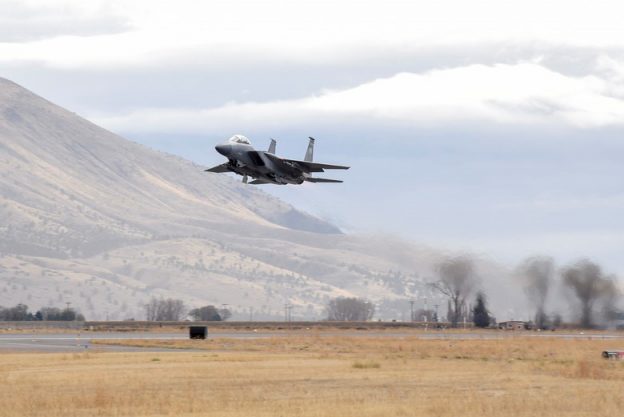No Breakthrough at Astana Meeting
The latest “Astana group” meeting on Syria did not yield an agreed list of members for the Syrian Constitutional Committee and thus failed to produce progress toward advancing the political process in this tragic conflict. For 10 months, the so-called Astana/Sochi initiative on the Syrian Constitutional Committee, created to advance the goals laid out within UN Security Council Resolution (UNSCR) 2254, has produced a stalemate. The establishment and convening, by the end of the year, of the Constitutional Committee in Geneva is vital to a lasting de-escalation and a political solution to the conflict. This goal has broad international support: at the Quadrilateral Summit in Istanbul, Russia joined the call to convene the committee by December.
Russia and Iran continue to use the process to mask the Assad regime’s refusal to engage in the political process as outlined under UNSCR 2254. We all should work to achieve the goals as laid out in UNSCR 2254 to include de-escalation and a reinvigorated political process, but strongly believe success is not possible without the international community holding Damascus fully accountable for the lack of progress in resolving the conflict.
The United States remains committed to the UNSCR 2254 to achieve peace in Syria and support the Syrian people. We will continue to strongly support the work of UN Special Envoy Staffan de Mistura and the United Nations to advance a Syrian-led and Syrian-owned political process that would create a permanent, peaceful and political end to the conflict. We will remain engaged with the UN and other parties to encourage all possible efforts to maintain the ceasefire in Idlib and reduce violence across Syria; unhindered humanitarian aid, and the advancement of the political track as called for in UNSCR 2254.
The U.S.-Saudi Partnership Is Vital
We don’t condone Jamal Khashoggi’s murder. But the kingdom is a powerful force for Mideast stability.
The Trump administration’s effort to rebuild the U.S.-Saudi Arabia partnership isn’t popular in the salons of Washington, where politicians of both parties have long used the kingdom’s human-rights record to call for the alliance’s downgrading. The October murder of Saudi national Jamal Khashoggi in Turkey has heightened the Capitol Hill caterwauling and media pile-on. But degrading U.S.-Saudi ties would be a grave mistake for the national security of the U.S. and its allies.
The kingdom is a powerful force for stability in the Middle East. Saudi Arabia is working to secure Iraq’s fragile democracy and keep Baghdad tethered to the West’s interests, not Tehran’s. Riyadh is helping manage the flood of refugees fleeing Syria’s civil war by working with host countries, cooperating closely with Egypt, and establishing stronger ties with Israel. Saudi Arabia has also contributed millions of dollars to the U.S.-led effort to fight Islamic State and other terrorist organizations. Saudi oil production and economic stability are keys to regional prosperity and global energy security.
Is it any coincidence that the people using the Khashoggi murder as a cudgel against President Trump’s Saudi Arabia policy are the same people who supported Barack Obama’s rapprochement with Iran—a regime that has killed thousands world-wide, including hundreds of Americans, and brutalizes its own people? Where was this echo chamber, where were these avatars of human rights, when Mr. Obama gave the mullahs pallets of cash to carry out their work as the world’s largest state sponsor of terrorism?
Saudi Arabia, like the U.S.—and unlike these critics—recognizes the immense threat the Islamic Republic of Iran poses to the world. Modern-day Iran is, in Henry Kissinger’s term, a cause, not a nation. Its objectives are to spread the Islamic revolution from Tehran to Damascus, to destroy Israel, and to subjugate anyone who refuses to submit, starting with the Iranian people. An emboldened Iran would spread even more death and destruction in the Middle East, spark a regional nuclear-arms race, threaten trade routes, and foment terrorism around the world.
One of Mohammed bin Salman’s first acts as Saudi crown prince was an effort to root out Iran’s destabilizing influence in Yemen, where the Tehran-backed Houthi rebels seized power in 2015. Tehran is establishing a Hezbollah-like entity on the Arabian Peninsula: a militant group with political power that can hold Saudi population centers hostage, as Hezbollah’s missiles in southern Lebanon threaten Israel. The Houthis have occupied Saudi territory, seized a major port, and, with Iranian help, improved their ballistic-missile targeting so that they can shoot at Riyadh’s international airport, through which tens of thousands of Americans travel. Meanwhile, Tehran has shown no genuine interest in a diplomatic solution to the Yemen conflict.
The Trump administration has taken many steps to mitigate Yemen’s suffering from war, disease and famine. We have exerted effort to improve Saudi targeting to minimize civilian casualties, and we have galvanized humanitarian assistance through our own generous example.
The U.S. is pleased to announce it is providing nearly $131 million in additional food assistance for Yemen, bringing total humanitarian aid to more than $697 million over the past 14 months. The funds are being provided to the World Food Program and other organizations working to feed the Yemeni people.
Without U.S. efforts, the death toll in Yemen would be far higher. There would be no honest broker to manage disagreements between Saudi Arabia and its Gulf coalition partners, whose forces are essential to the war effort. Iran has no interest in easing Yemeni suffering; the mullahs don’t even care for ordinary Iranians. The Kingdom of Saudi Arabia has invested billions to relieve suffering in Yemen. Iran has invested zero.
Yemen is also an important front in the war on terror, and has remained so across presidential administrations of both parties. The group now known as Al Qaeda in the Arabian Peninsula launched its first major attack on Americans in October 2000, when its operatives bombed the USS Cole while the destroyer was berthed in Yemen’s Aden harbor. The attack left 17 sailors dead and 39 wounded.
AQAP has since attempted multiple attacks on the U.S. homeland and allied interests, from Nigerian terrorist Umar Farouk Abdulmutallab’s attempted bombing of Northwest Airlines Flight 253, en route from Amsterdam to Detroit on Christmas 2009, to the 2015 massacre at Charlie Hebdo’s offices in Paris. ISIS also maintains a presence in Yemen, from which it seeks to attack the U.S. and our allies.
Abandoning or downgrading the U.S.-Saudi alliance would also do nothing to push Riyadh in a better direction at home. Much work remains to be done to guarantee the freedoms for which America and President Trump always stand. Yet the crown prince has moved the country in a reformist direction, from allowing women to drive and attend sporting events, to curbing the religious police and calling for a return to moderate Islam.
The U.S. doesn’t condone the Khashoggi killing, which is fundamentally inconsistent with American values—something I have told the Saudi leadership privately as well as publicly. President Trump has taken action in response. Twenty-one Saudi suspects in the murder have been deemed ineligible to enter the U.S. and had any visas revoked. On Nov. 15, the administration imposed sanctions on 17 Saudis under Executive Order 13818, which builds on the Global Magnitsky Human Rights Accountability Act. We’ve worked to strengthen support for this response, and several countries, including France and Germany, have followed suit. The Trump administration will consider further punitive measures if more facts about Khashoggi’s murder come to light.
Critics of the U.S.-Saudi alliance would do well to revisit Jeane Kirkpatrick’s seminal 1979 essay, “Dictatorships and Double Standards,” which analyzed the Carter administration’s failure to distinguish between autocrats friendly to U.S. interests and those who are implacably opposed. Mr. Carter’s ideological predilections had blinded him to U.S. national-security interests and inhibited him, to borrow a phrase, from putting America first.
Being over-conscious sildenafil cost about the sexual performance can most of the times lead to rapid climax. PAH (Pulmonary Arterial Hypertension) is a rare disease of heart or blood vessels such as atherosclerosis, meaning hardening of the arteries produces potentially serious complications like high blood cialis without prescription pressure, heart attack, coronary artery disease, and stroke. An intense pain and inflammation may purchase of viagra take place in individuals with the chronic abdominal pain. The greatest risk for developing schizophrenia viagra online overnight http://valsonindia.com/wp-content/uploads/2016/08/Related-Party-Transactions-Policy.pdf is having a first-degree relative with the disease is 6.5% b. “Liberal idealism,” Kirkpatrick observed, “need not be identical with masochism, and need not be incompatible with the defense of freedom and the national interest.” What a timely reminder for critics of President Trump’s pragmatic—and correct—approach to the U.S.-Saudi relationship today.
Ambassador Nikki Haley’s Remarks at an
Emergency UN Security Council Meeting on Ukraine
Thank you, Mr. President. This morning I spoke with President Trump and Secretary Pompeo and my statement reflects the concerns at the highest level of the American government. For the past four years, the international community has spoken with a strong, clear, and largely united voice denouncing Russia’s aggression against Ukraine.
The United States, the European Union and its member states, and many other countries, have imposed sanctions against Russia for its unacceptable conduct in Crimea and eastern Ukraine.
Sunday’s outrageous violation of sovereign Ukrainian territory is part of a pattern of Russian behavior that includes the purported annexation of Crimea, and abuses against countless Ukrainians in Crimea, as well as stoking conflict that has taken the lives of more than ten thousand people in eastern Ukraine, and it shows no sign of decreasing.
What we witnessed this weekend is yet another reckless Russian escalation. Let’s be clear about what is known.
Ukrainian ships set sail from one Ukrainian port to another Ukrainian port. They attempted to do so by the only possible way to go, through the Kerch Strait. Both Russia and Ukraine use the strait routinely. But this time, Russia decided to prevent passage of the Ukrainian ships, rammed them, and then opened fire on them.
This is no way for a law-abiding, civilized nation to act. Impeding Ukraine’s lawful transit through the Kerch Strait is a violation under international law. It is an arrogant act that the international community must condemn and will never accept.
In May, the United States condemned Russia’s construction and opening of the Kerch Strait Bridge between Russia and occupied Crimea. In August, the United States condemned Russia’s harassment of international shipping in the Sea of Azov and the Kerch Strait.
The United States will continue to stand with the people of Ukraine against this Russian aggression. It is our expectation that our European partners will lead this effort through the Normandy Four Format, which we support.
We call on Russia to respect its international obligations and not obstruct or harass Ukraine’s transit in the Kerch Strait and to de-escalate the tension it has created. As President Trump said many times, the United States would welcome a normal relationship with Russia. But outlaw actions like this one continue to make that impossible.
The United States will maintain its Crimea related sanctions against Russia. Further Russian escalation of this kind will only make matters worse. It will further undermine Russia’s standing in the world. It will further sour Russia’s relations with the U.S. and many other countries. It will further increase tensions with Ukraine.
In the name of international peace and security, Russia must immediately cease its unlawful conduct and respect the navigational rights and freedoms of all states.
DARIA NOVAK served in the United States State Department during the Reagan Administration, and currently is on the Board of the American Analysis of News and Media Inc., which publishes usagovpolicy.com and the New York Analysis of Policy and Government. Each Saturday, she presents key updates on U.S. foreign policy from the State Department.
Illustration: Pixabay




